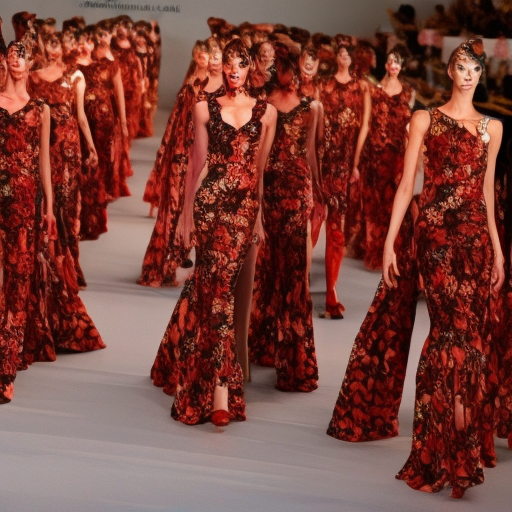Summary: Runway shows are events where fashion designers showcase their latest collections on a catwalk in front of an audience of industry professionals, buyers, and press. These shows play a crucial role in the fashion industry, setting trends and influencing the direction of fashion. Runway shows are carefully choreographed productions that involve models, music, lighting, and set design. They provide a platform for designers to express their creativity and establish their brand identity.
Introduction
Runway shows are an integral part of the fashion industry, serving as a platform for designers to showcase their latest collections. These events are carefully orchestrated productions that involve a combination of fashion, music, lighting, and set design. Runway shows are not only a means of presenting new designs but also a way for designers to establish their brand identity and influence the direction of fashion.
The Purpose of Runway Shows
The primary purpose of runway shows is to present new collections to an audience of industry professionals, buyers, and press. These shows allow designers to demonstrate their creative vision and craftsmanship, showcasing their designs in a way that captures attention and generates excitement. Runway shows also serve as a marketing tool, helping designers attract buyers and secure orders for their collections.
The Runway Show Experience
Attending a runway show is a unique experience that involves more than just watching models walk down a catwalk. The atmosphere is electric, with anticipation building as the lights dim and the music starts. The runway itself is a focal point, often elevated and surrounded by seating for the audience. The models walk in a predetermined pattern, showcasing each outfit to its full potential. The music, carefully selected to complement the collection, adds to the overall ambiance of the show.
Key Elements of a Runway Show
Several key elements contribute to the success of a runway show. Lighting plays a crucial role in highlighting the garments and creating the desired mood. Set design, including the backdrop and stage props, helps create a cohesive visual experience. The choice of models is also important, as they need to embody the designer’s vision and showcase the clothes effectively. Music sets the tone and enhances the overall atmosphere of the show.
Types of Runway Shows
There are different types of runway shows, each with its own format and purpose. The most common type is the traditional runway show, where models walk down a straight catwalk. Another popular format is the presentation, where models stand or move around in a designated space, allowing the audience to get a closer look at the garments. Some designers opt for more unconventional formats, such as immersive experiences or performances, to create a memorable show.
The Influence of Runway Shows
Runway shows have a significant influence on the fashion industry. They set trends, dictate what will be in style for the upcoming season, and shape the overall aesthetic of the industry. The collections presented on the runway often inspire other designers, retailers, and consumers, influencing their purchasing decisions and fashion choices. Runway shows also generate media coverage, with fashion journalists and photographers capturing the latest designs and trends.
The Future of Runway Shows
In recent years, the fashion industry has seen changes in how runway shows are presented. With the rise of digital platforms and social media, designers have started live-streaming their shows, allowing a global audience to experience the event in real-time. Virtual reality and augmented reality technologies are also being explored to enhance the runway show experience. These innovations are likely to shape the future of runway shows, making them more accessible and immersive for a wider audience.
Conclusion
Runway shows are an essential part of the fashion industry, providing a platform for designers to showcase their latest collections and establish their brand identity. These carefully choreographed productions set trends, influence fashion choices, and generate excitement within the industry. With the advent of digital technologies, runway shows are evolving to reach a wider audience and offer more immersive experiences.












